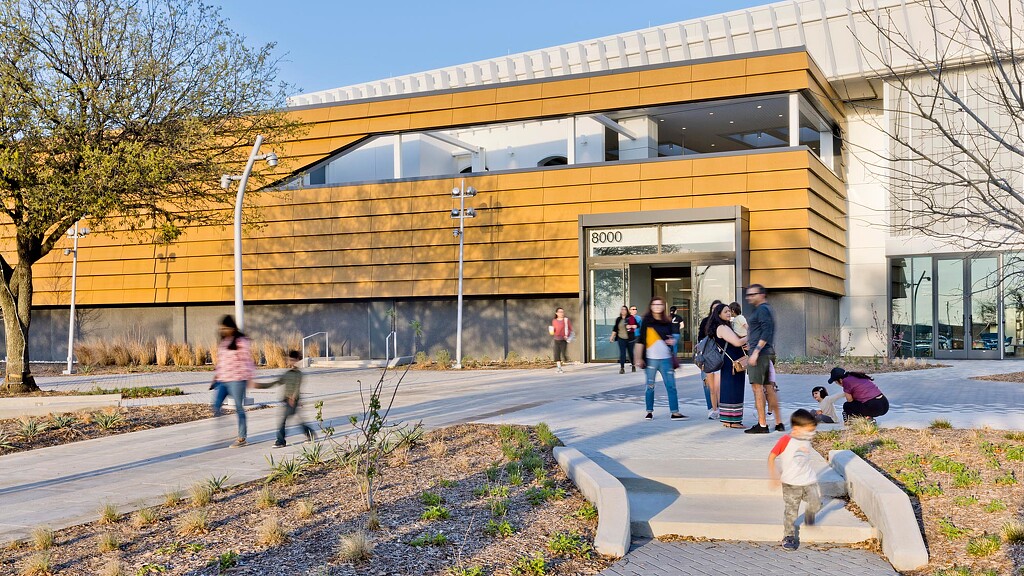Inclusive Design for the 21st Century Library
August 16, 2024 | By Emerson Stoldt
In today's rapidly evolving world, libraries are more than just repositories of books and knowledge; they are becoming a critical stitch in the fabric of their community and serve as vibrant gathering places with significant impact on the surrounding area. From acting as tech training hubs to heat refuge centers to offering food drives, citizenship classes, and English as a Second Language (ESL) courses, today’s libraries are vital social infrastructure. Yet, across the U.S., local public libraries are facing legislation and defunding that threatens their fundamental role of serving their communities.
Every library takes on a different identity that must be tailored to serve the diverse needs of their neighborhoods and patrons. In order to fulfill this new role, the library of the 21st century must engage in inclusive design strategies to ensure that every patron feels welcomed and engaged.
What does inclusivity mean in the context of a library?
As far back as 2006, the UK Design Council released their Principles of Inclusive Design which defined inclusive design through eight principles:
- Responsive: takes account of what people say they need and want.
- Convenient: usable without too much effort.
- Understandable: everyone can locate and access it.
- Welcoming: no disabling barriers that might exclude some people.
- Inclusive: everyone can use it safely, easily, and with dignity.
- Accommodating: for all people, regardless of age, gender, mobility, ethnicity, or circumstances.
- Flexible: different people can use it differently.
- Realistic: more than one solution to address differing needs.
When looking at the evolving role of the modern library through this lens, we can define inclusive design strategies that align with each of these principles:
Responsive: A library must address the specific needs of the community it serves
When planning a new library or renovating an existing library within a neighborhood, the first step should be community engagement. The engagement should be wide-reaching, soliciting opinions from library system leadership, local staff, patrons of the current library space, and especially striving to understand the needs of community members who do not use the library in its current form. This engagement ensures that the library reflects the unique characteristics and needs of its community.
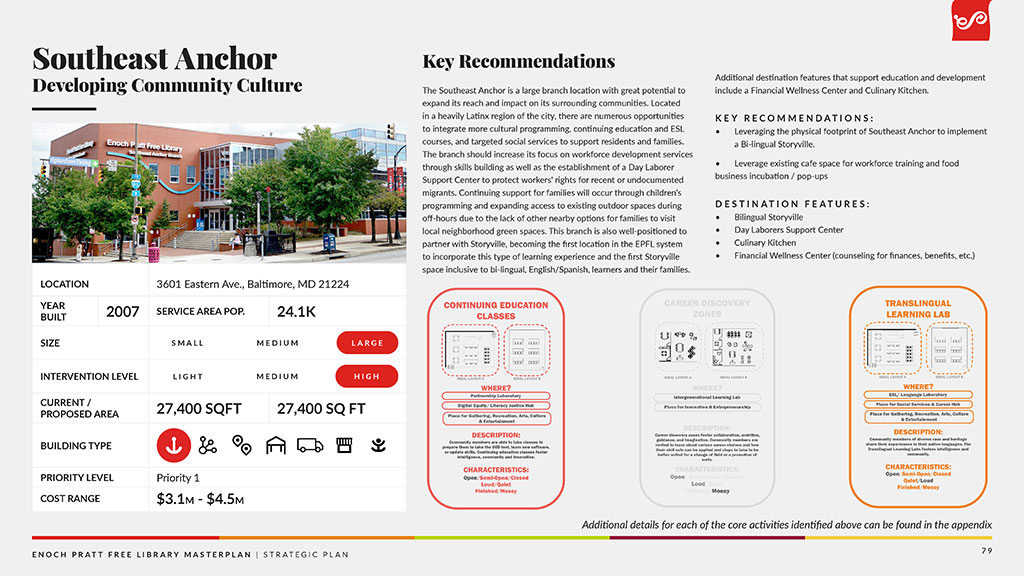
Convenient: A library must be easy to get to
An accessible design should consider all aspects of mobility, such as handicap parking spaces, ramps, and stair-free main entries. However, the first impression a patron has of their local library begins well before its front door. As a community hub, the journey to the library should be as convenient as using it. A library needs to seamlessly connect to broader circulation and transportation infrastructure in the area. Inclusive design encompasses access for those who walk, bike, or use public transit, ensuring ease of access for all. This approach ensures that everyone, regardless of their mode of transportation, can easily access library services.
Understandable: A library must make itself obvious
To fulfill its role as a community hub, a library needs to be easy to find without having to open a GPS app. While the architectural design of a library should respect its context and reflect the identity of its neighborhood, the architecture should embody the importance of the library’s role in its community and create a beacon that can be identified from afar and draw visitors to it. The library should have a front door and entry experience that embraces the sidewalk and isn’t disconnected from the neighborhood by being set back behind a sea of parking.
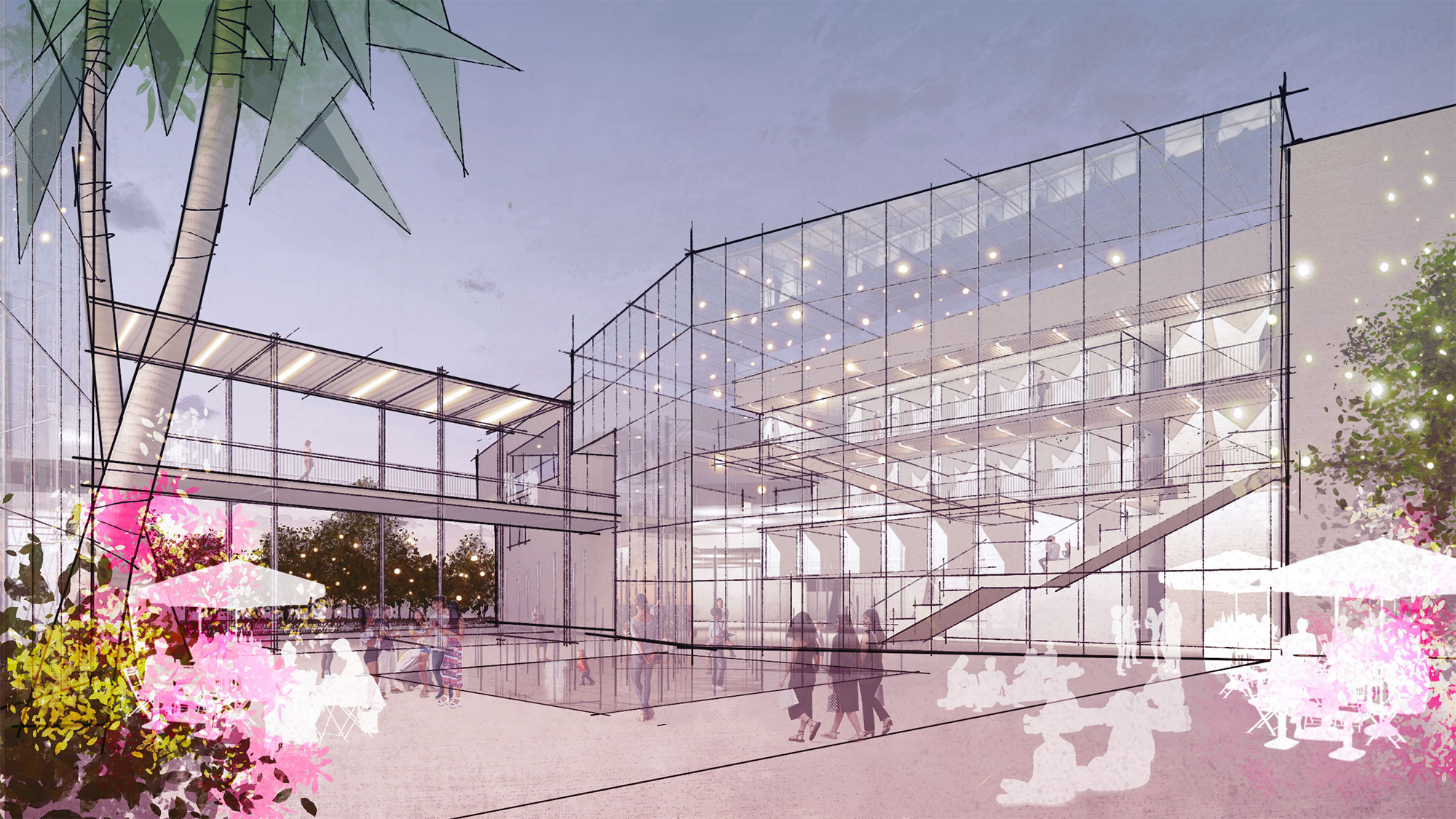
Welcoming: A library must be a comfortable space to spend time
To be truly inclusive, libraries must proactively remove physical barriers that could potentially exclude individuals. Architectural design plays a critical role in ensuring clear, intuitive wayfinding throughout the library, making all areas accessible for those with mobility impairments, and creating a welcoming atmosphere that embraces diversity. This includes the thoughtful placement of amenities and furniture to facilitate ease of movement and navigation for all patrons.
Integrating universal design principles into the architectural layout and interior design helps promote inclusivity by accommodating diverse needs and preferences. Clear sightlines and access to natural daylight not only contribute to a more welcoming atmosphere but also enhance productivity and well-being. By prioritizing inclusive architectural features and thoughtful spatial planning, libraries can ensure that every visitor feels valued and able to fully participate in library activities and resources.
Inclusive: A library must ensure everyone can use it safely, easily, and with dignity
Modern libraries must provide an environment where all patrons, regardless of their abilities, feel safe and respected. Architectural design strategies that support this principle include ensuring clear sightlines throughout the library to enhance safety, incorporating family restrooms to support various family structures, and providing facilities and amenities that accommodate different needs. This might involve designing sensory-friendly zones for neurodiverse individuals and creating quiet study areas that offer refuge without isolation.
Providing a monitored space for the community's homeless population to charge devices and safely engage with their neighbors ensures that everyone, including the most vulnerable, can benefit from the library's resources. By focusing on these inclusive design elements, libraries can ensure that all community members feel comfortable and supported while using the facilities.
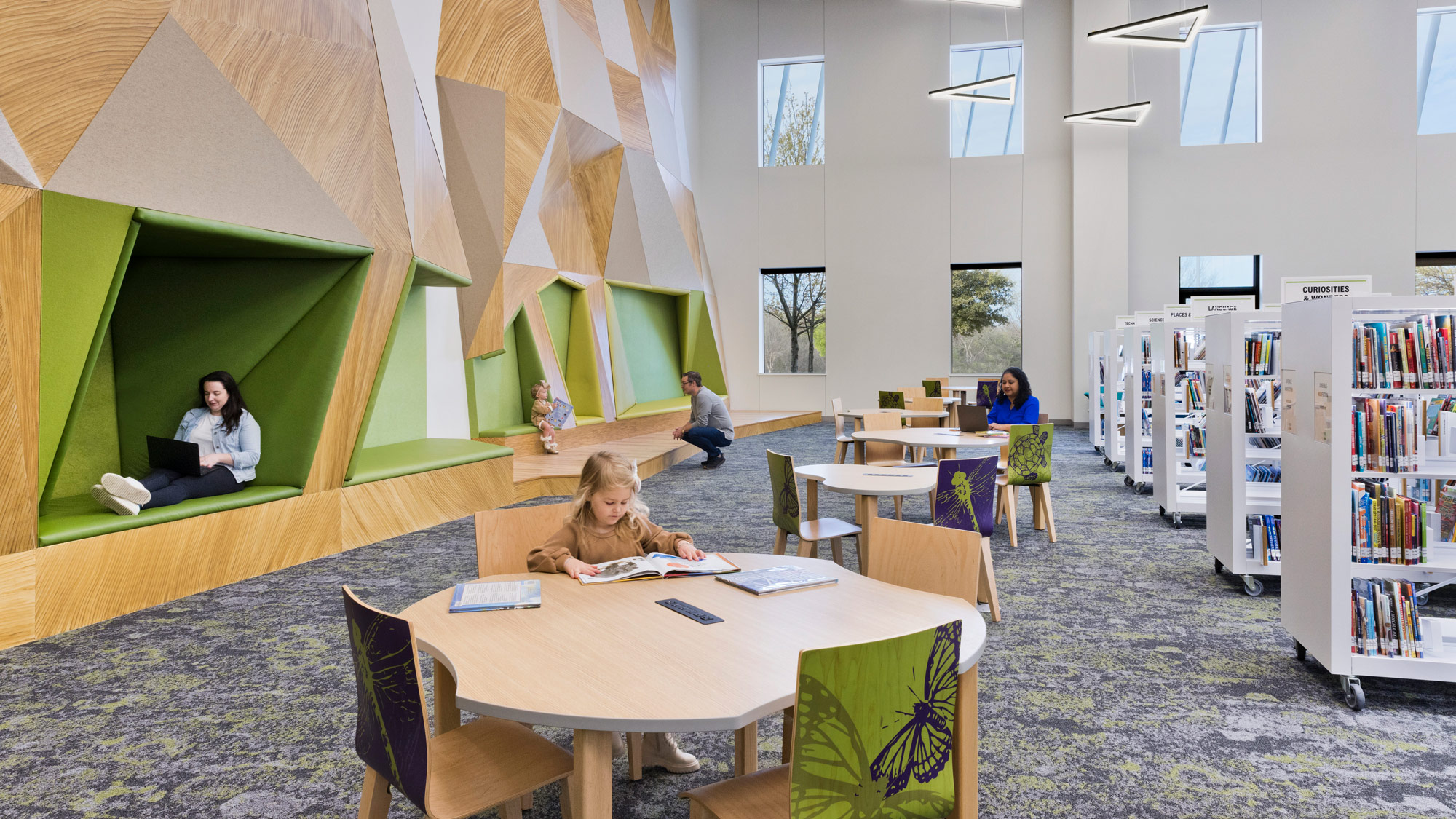
Accommodating: A library must welcome all individuals
Libraries should be designed to accommodate all people, regardless of age, gender, mobility, ethnicity, or circumstances. This includes providing a range of seating options to suit different physical needs, multilingual signage, and resources for those with sensory processing disorders. Inclusive libraries also consider the needs of parents with young children, elderly patrons, and individuals with disabilities. Cultural and religious inclusivity is also vital, with spaces for prayer, gatherings, and other dedicated areas, reflecting the library's commitment to serving all community members.
Flexible: A library must be adaptable for different uses and users
Libraries must offer spaces that can be used in multiple ways by different people, promoting a sense of inclusivity and community engagement. This might include quiet study areas that can double as small meeting spaces, collaborative workspaces that accommodate both individual work and group projects, children’s play areas that are designed with flexibility so they can also serve as community gathering spots, and event spaces that can host a variety of activities from lectures to cultural performances. Flexibility in design maximizes the library’s utility and allow spaces to be easily reconfigured to accommodate different activities and changing needs over time, ensuring that the library remains relevant and accessible to all members of the community.
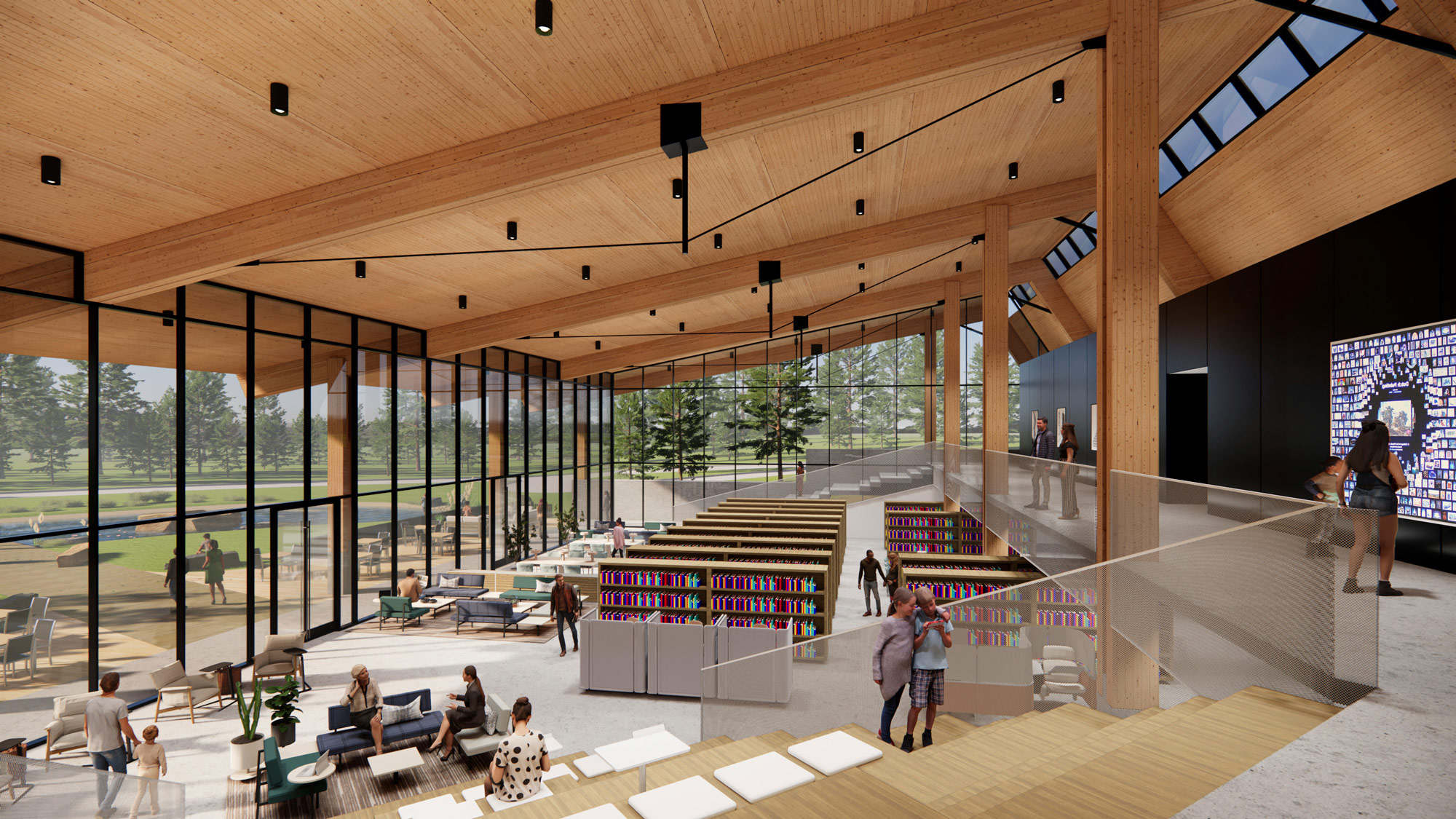
Realistic: A library must offer multiple solutions
Libraries must acknowledge that there is no one-size-fits-all solution to inclusivity. Instead, they should offer a variety of options to meet differing needs, ensuring that everyone in the community feels welcomed and supported. Many community libraries serve as a micro "town square," where different cultures and generations come together to exchange ideas and experiences.
In these spaces, teens can gather and socialize in a safe environment, fostering a sense of community and belonging. Seniors can receive technology help from the chronically online generation, bridging the digital divide and empowering them with new skills. People with limited home access can utilize the library’s resources to connect to the world. Moreover, libraries provide spaces for free programming offered by public library systems, ranging from educational workshops to cultural events, ensuring that everyone has access to enriching experiences.
Inclusive design in libraries goes beyond merely meeting accessibility standards. It involves creating dynamic, welcoming spaces that reflect the unique fabric of the community. This holistic approach to library design not only promotes inclusivity but also strengthens the social bonds within the community, making libraries indispensable assets in the 21st century.
For media inquiries, email .
